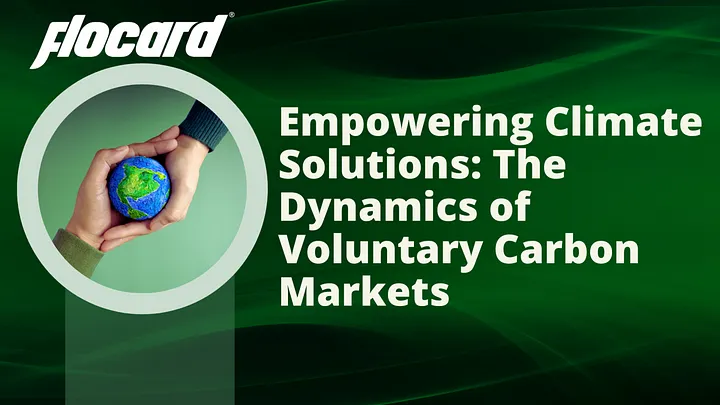Voluntary Carbon Market: A Way To Sustainability

In a world teetering on the brink of environmental crisis, with the consequences of climate change growing ever more apparent, there emerges a beacon of hope — the voluntary carbon market. Envision a marketplace where businesses and individuals are empowered to not only mitigate their own carbon emissions but also actively contribute to a sustainable future. This innovative solution is gaining global traction and is far from hypothetical.
Understanding the Voluntary Carbon Market What is the Voluntary Carbon Market?
The Voluntary Carbon Market (VCM) stands as a testament to proactive environmental action. It's a system enabling the generation, buying, and selling of carbon credits on a voluntary basis. Each carbon credit represents one ton of greenhouse gas avoided or removed by emissions-reducing projects. This market operates separately from the mandatory carbon market, which imposes legal obligations on entities for emissions reduction.
The Growth and Evolution of the VCM
Originating in the early 1990s, the VCM has since witnessed substantial growth. Today, it boasts an annual growth rate of 10%, with a market value in the billions and nearly 100 million tonnes of CO2 transacted in 2020. Factors like increased climate change awareness and international initiatives like the Paris Agreement have fueled this growth, and the market shows no signs of slowing down.
Operational Insights: How the VCM Functions Creating Carbon Credits: A Step-by-Step Process
The creation of carbon credits involves a meticulous process of validation and verification:
- Project Development: Identifying and submitting emission-reducing activities for consideration.
- Validation: Third-party bodies assess these projects against standards like the Verified Carbon Standard (VCS) or the Gold Standard.
- Verification: Post-implementation, these projects are reviewed to ensure expected emission reductions are met.
- Certification and Issuance: Successful projects receive certification, and carbon credits are issued.
- Registration and Trading: These credits are registered and made available for purchase on carbon markets.
- Offsetting Emissions: Buyers purchase credits to neutralize their carbon footprint as part of sustainability efforts.
- Retirement of Credits: To avoid double-counting, credits are retired post-purchase, ensuring accountability.
The Double-Edged Sword: Benefits and Challenges Advantages and Obstacles in the VCM
The Voluntary Carbon Market serves as an innovative tool in climate change mitigation, stimulating economic growth while providing environmental benefits. It supports sustainable economic development and generates revenue for investors. However, challenges like maintaining consistent certification standards and ensuring market transparency need to be addressed to fully harness the VCM’s potential.
Real-World Impact: Examples that Inspire Case Studies in Making a Difference
Examples like the Gold Standard CER Program and Bifrost Carbon's Renewable Energy Program illustrate the tangible impact of the VCM. These initiatives highlight how supporting carbon-reducing projects can lower greenhouse gas emissions and foster sustainable growth.
Conclusion: Our Collective Journey Towards Sustainability Joining Hands with FloCard for a Greener Future
The Voluntary Carbon Market is an essential tool in combating climate change. It offers a unique avenue for climate action, allowing us to play a crucial role in building a sustainable future. By supporting carbon-reducing projects, we don't just reduce our carbon footprint; we contribute to the global effort towards sustainability.
As we embrace our collective responsibility, let's leverage the power of FloCard to make a real difference. Visit the Verified Carbon Standard and the Gold Standard to discover how you can participate in this transformative movement.
Let's unite our efforts with FloCard, stepping forward together into a more sustainable tomorrow. Every action counts in our journey towards a healthier planet and a more sustainable future.
